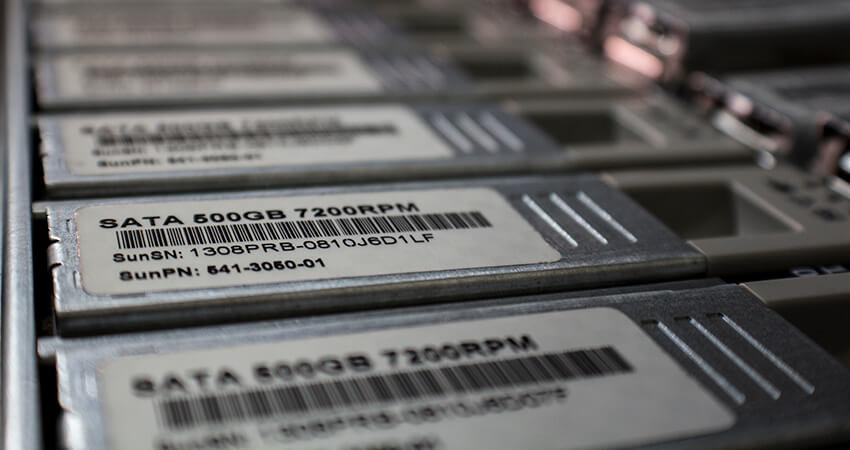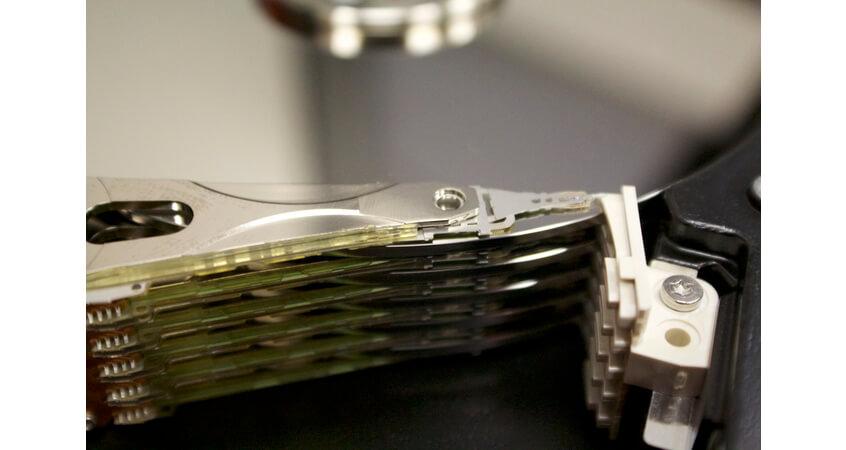What Is the Cloud and Can I Trust It?
Backing up to the cloud is a term that we have all heard before, but what does that really mean? What is the cloud?
The cloud is just a network of servers, and a server is just a program that provides functions or utilities to other devices on the Network. Commonly, the large racks that hold the hard drives that make up the service applications are also referred to as a server.

When you connect to the cloud you are just connecting to a server designed to provide a specific task. For example, if you were to use Google Drive to backup some text documents, those documents would be stored within a server that makes up the cloud.
At the same time, you can use a server such as the Adobe Creative Cloud, where you connect to a server to gain access to specific applications and tools such as Photoshop. This way you can have access to significantly more tools and utilities than you can have installed on a single computer.
What Does It Mean to Backup to the Cloud?
When people refer to “backing up to the cloud” what they are talking about is using an internet connection to send the files on your computer’s hard drive to another hard drive stored in a server at whichever service provider you decide to use (Amazon, Google Drive, etc.).
There is no magic place on the Internet your data is sitting. It is still sitting on a hard drive; most likely older than the drive you have in your own computer. What makes backing up to the cloud safe is that these services and companies understand that sometimes hard drives fail, and therefore they store the data in a RAID.
This is a whole topic on its own, but basically a RAID is used to either speed up how fast your computer can access data, or to create redundancy so that even if you have a hard drive failure your data will still be present on another drive within their server. RAIDs are also used to create larger volumes, as they are made up of multiple drives.
This is the reason clouds are considered to be one of the safest options when backing up your data. However there are still drawbacks. Cloud based backup services require an internet connection to backup your files. No matter how fast your internet connection is, this will be slower than if you were backing up to a hard drive directly connected to your system. Another drawback is that you will need an Internet connection to reach your files. If you cannot access your files in a time of need, the backup did not serve its purpose.
There is also always the possibility of the service you are using either going out of business, changing their policy to not support the type of backups you are running, or a simple clerical error which turns off your account. While these events are extremely unlikely, we still recommend having your data stored in more than one location even if you are using a cloud-based service.
How Can the Cloud Be Safe?
Everyone has probably heard about or read about a story regarding a data breach in the last few months, so how can the cloud possibly be a safe place to keep data? While most of these reports are true, the hack that was used is referred to as social engineering. In most social engineering situations, the “hacker” is going to attempt to have you give up your password, so it is important to never give out your password.
Some of the more publicized cloud breaches are the result of poor password security, either giving out your password to a fake representative, or just using a simple password with no symbols and/or minimal numbers. Simple passwords like these can be easily cracked in a brute force attack, which will just try to access your account with every single word possible, attempting thousands of logins in minutes. If proper password management had taken place none of these breaches could have taken place, the password was not lost by the organization but from the individuals.
It is important to realize that once your data is online the possibility of a breach does exist, however it is extremely unlikely. When your data is stored onto a cloud based server your information is going to be encrypted, even if the would be hacker were to gain access to your files they would still need to encryption key to make the files readable. It is possible, but the amount of time and resources to open the files is unreasonable for simple user data.
If your account is breached, the next thing the hacker will attempt is to use the login credentials on as many websites as they can think of, so you always want to use a different password for each login you have even if you just add onto the existing password.
How Do I Avoid Data Loss?
The reality is that your data is never going to be 100% secure, so you want to take all precautions and be running multiple backups in order to protect yourself.
Often times after we have been able to recover our customers data we get the question: “How do I prevent this from happening again in the future?”
The reality of this is that when it comes to hard drives, it’s not if they will fail, it’s when will they fail. However, you can take precautions with your drives. The basic rule to keeping a hard drive in good health is to not move the drive while it is spinning. If you were to walk around using your laptop you would slowly be causing damage to your drive (if it were a rotational drive).

The Read/Write head, which is the actual component that reads the data off of your hard drive platters, sits only 1/10 the thickness of a strand of human hair away from the hard drive. On the end of the head there is a very small magnet that reads the data from the drive, if this head were to touch the platter it would cause platter scoring, which will eventually lead to hard drive failure.
Modern hard drives come in two speeds 5400rpm and 7200rpm. Every time the hard drive rotates and the read/write head passes over the scratch, it will get larger. Each scratch is permanently erasing data.
The only way to keep your data safe from a data loss is to have your files backed up into more than one location. At this point in the conversation is normally when the idea of backing up to a cloud based service is brought up, and whether or not we believe this is a good idea.
What Is the Best Way to Keep My Data Safe?
It is our recommendation to run multiple backups. Run a cloud backup to a trusted service such as Amazon, and run a local backup to another hard drive you have at home using a tool like Data Backup Pro to make sure you always have another copy of your data within reach in case of an emergency.
The more drives your data is backed up to, the safer you will be from data loss.
With Data Backup Pro you can create multiple backup types depending on how you want your backups to run:
Clone - Making a clone is commonly used when you are trying to make a complete copy of your bootable internal drive. You can use the clone as a future replacement drive for your computer if your boot drive crashes.
Simple Copy - The source drive/folder will be copied into the destination drive/folder. Commonly used to easily backup your user files such as Pictures, Videos, Documents, and more.
Versioned - Versioned backups store the old and deleted versions of all the backed-up files inside a hidden area within your destination drive/folder. This operates in the same way as a Time Machine backup while offering more flexibility.
Synchronize - Stores your data in two locations at the same time. A synchronize backup method merges the contents of two drives and/or folders and places the complete set of data into both the source and the destination, perfect for those working in multiple locations.
You will be able to schedule these backups to run automatically, and can setup the software to either email or text when the backup is completed, or if the backup has run into any issues. Most people just set their backups up when they first get their computer and never look at it again until it is needed, but then discover that their backups have not been running. Being notified and taking the warnings serious is the best way to keep your data safe.
Using a trusted cloud based service is a safe and reliable place to backup your files. Make sure to use a secure password that you never share, and your data should be secure for the long haul. Backing up to a local external drive will make sure your data is always backed up in a location that can be reached in a time of need.